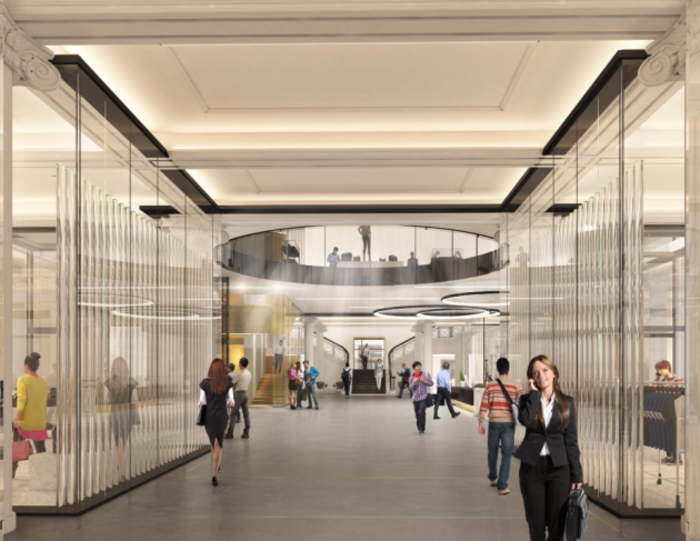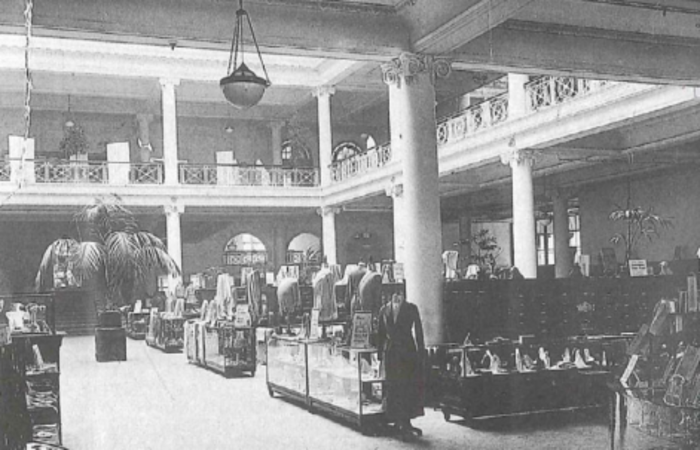More than a year after Clerys' shock closure, the store's redevelopment has been cleared
The retailer was shut down with the loss of more than 450 jobs overnight.
THE CLERYS CLOCK will survive the redevelopment of the landmark O’Connell Street store, which was controversially shut down by its new owners last year.
Dublin City Council has granted planning permission to a project that will see an extra rooftop level added to the main building and a hotel, shops, office space and restaurants opened on the site.
Other conservation and restoration measures promised by the Natrium consortium include cleaning up the Portland stone facade of the building, reinstatement of existing windows and the restoration of the feature double staircase.
When Natrium bought Clerys in June of last year, the group immediately closed it down in a shock move that saw the loss of more than 450 jobs.
Clerys’ previous owners, Gordon Brothers, had split the business into two companies – a profitable firm that owned the valuable property and a loss-making operational firm that ran the department store. The second was immediately put into liquidation after the sale to Natrium.
New plans
Natrium has since put forward plans to turn the building into a prime shopping location that also features a hotel and restaurants.
Plans lodged with Dublin City Council are keen to reference the building’s past, while also featuring additions like a glass atrium in the new rooftop level to deliver light down to the ground floor.
 The proposed building's main foyer
The proposed building's main foyer
 A photograph of Clerys ground floor in the 1930s
A photograph of Clerys ground floor in the 1930s
The basement and first floors of the main building will be dedicated to retail; the ground floor to an entrance and lobby; the second, third and fourth to office space.
The new top area – complete with external viewing deck over O’Connell Street and a sunken planted area to the rear – is described in the architects’ plans as a “rooftop destination”.
The Clerys Tea Rooms will be “reinstated” and accessible via a lift and the feature staircase which led into the main ground shopping floor before the department store’s closure.
Hotel plans
The Clerys site also includes houses on Marlborough Street and a large warehouse plot, which will be turned into a hotel with a restaurant/café/bar at its entrance on Earl Place and courtyards and bridge links bringing extra bedrooms and the main hotel together.
The houses on Marlborough Street are historically significant – they were built as grand family homes around 1760 and features like the original chimneys and fireplaces will be retained in the refurbishment.
The architects claimed in their plans:
“O’Connell Street as it stands today has lost its status in all but name as a European capital street; it does not compare favourably with our continental neighbours and the story of this street and of the buildings on this street must now become one of regeneration, rebirth and renaissance.”
History
The building known to recent generations as Clerys is located on the site of McSwiney Delaney & Company’s ‘Palatial Mart’, a Victorian department store built in 1853 to coincide with the Dublin International Exhibition.
The building was taken over by Michael Clery from Bulgaden, Co Limerick with a consortium of owners (hence the Clerys & Co.) and reopened in 1884 after a year’s hiatus.
Clerys did not avoid the devastation wreaked on then-Sackville Street during the 1916 Rising and the building was entirely destroyed by fire. The current building was opened in August 1922. Its chequered history continued when it went into bankruptcy in 1940, passing eventually to the Guiney family who owned it until 2004.
It was placed into receivership in 2012 and was taken over by the US investment firm Gordon Brothers. They in turn sold it for €29 million to the Natrium consortium headed up by Deirdre Foley, John Skelly and Ronan Daly.
When Clerys closed suddenly last year, the group was heavily criticised for the manner of the closure – which left hundreds jobless overnight and the state to pick up the tab for redundancy payments.
There were 43 letters of objection to the plans submitted to Dublin City Council, among them complaints from former workers, as well as local councillors.Natrium has claimed the new development will eventually employ 2,500 people.
Written by Susan Daly and posted on TheJournal.ie






